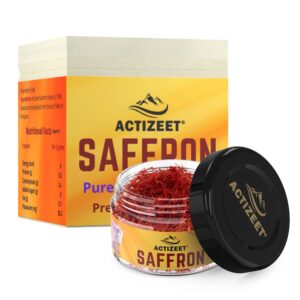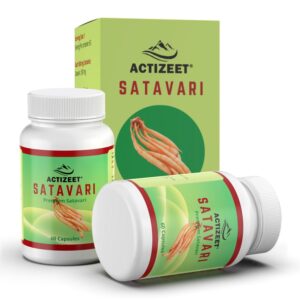Welcome to the fascinating world of Pueraria lobata, a plant with a multitude of names, such as kudzu or the ‘vine that ate the South.’ Native to East Asia, this perennial vine is renowned for its vigorous growth and incredible versatility. Pueraria lobata belongs to the family Fabaceae (legume family) and is characterized by its twining vines, lush green leaves, and beautiful purple flowers.
Table of Contents
ToggleHistorical Background and Cultural Significance
Pueraria lobata has a rich history deeply intertwined with Asian cultures. For centuries, it has been utilized in traditional Chinese medicine as an herbal remedy for various ailments. Its use dates back to ancient times when it was revered for its ability to promote blood circulation, alleviate digestive disorders, and even improve liver function.
Moreover, Pueraria lobata holds cultural significance in Japan where it is known as “kuzu.” In Japanese cuisine and traditional medicine practices like Kampo, kuzu starch extracted from the roots of Pueraria lobata is employed as a natural thickener for sauces or soups. The Japanese also value its health benefits such as aiding digestion and soothing sore throats.
Distribution and Cultivation of Pueraria lobata
Initially native to East Asia – specifically China, Japan, and Korea – Pueraria lobata has now spread across continents due to both intentional introductions and accidental escapes from cultivation. It has thrived particularly well in regions with warm climatic conditions like the southeastern United States.
In terms of cultivation, Pueraria lobata prefers well-drained soils with moderate fertility but can adapt to various soil types. The vine’s rapid growth allows it to climb natural structures, trees, and even man-made structures like fences or buildings.
This adaptability has contributed to its reputation as an aggressive invasive species in some regions. Intriguingly, Pueraria lobata’s ability to fix atmospheric nitrogen with the help of symbiotic bacteria in its root nodules makes it beneficial for soil fertility improvement.
As a result, it has been used in agroforestry systems to enhance the productivity of farming lands. Stay tuned as we delve deeper into the chemical composition of Pueraria lobata and its effects on smoking addiction in the next sections!
Chemical Composition of Pueraria lobata
Key Bioactive Compounds in Pueraria Lobata
Pueraria lobata, or kudzu as it is commonly known, is loaded with a treasure trove of bioactive compounds that contribute to its medicinal properties. One group of compounds that steals the limelight in Pueraria lobata’s chemical arsenal is the isoflavones. These powerful plant-derived molecules have been extensively studied for their health benefits.
In Pueraria lobata, some notable isoflavones include puerarin, daidzin, and genistin. These compounds exhibit potent antioxidant and anti-inflammatory properties, which play a crucial role in combating various diseases.
Another interesting class of compounds found in Pueraria lobata are starches and sugars. Starches serve as an energy reserve for the plant and can be broken down into simple sugars when needed.
They provide a sustained release of glucose, offering long-lasting energy to sustain the plant’s growth and survival. These complex carbohydrates offer similar benefits to humans by providing a slow release of energy when ingested.
Flavonoids and Phenolic Acids
Pueraria lobata also boasts an impressive array of flavonoids and phenolic acids. Flavonoids are secondary metabolites that contribute to the vibrant colors seen in many fruits and vegetables. In Pueraria lobata, these compounds act as potent antioxidants, scavenging harmful free radicals and protecting cells from oxidative stress-induced damage.
Phenolic acids are another class of bioactive compounds found abundantly in Pueraria lobata. Among them, ferulic acid deserves special mention for its potential health-promoting effects.
Ferulic acid exhibits anti-inflammatory properties and has been linked to various therapeutic benefits including cardiovascular health support. The chemical composition of Pueraria lobata is a fascinating amalgamation of various bioactive compounds.
The isoflavones, starches and sugars, flavonoids, and phenolic acids present in this plant contribute to its medicinal properties and make it an enticing candidate for smoking de-addiction. Understanding the intricate chemistry behind Pueraria lobata’s therapeutic effects allows us to appreciate its potential to support smoking cessation efforts.
Mechanisms of Action in the Brain
Interaction with GABA Receptors and Neurotransmitters
When it comes to combating smoking addiction, Pueraria lobata works its magic through a variety of underlying mechanisms in the brain. One of the primary ways it exerts its effects is by interacting with GABA receptors and neurotransmitters.
GABA (gamma-aminobutyric acid) is a neurotransmitter that plays a crucial role in regulating neuronal excitability. By binding to GABA receptors, Pueraria lobata promotes an inhibitory effect on the central nervous system, leading to a calming and tranquilizing sensation.
Furthermore, Pueraria lobata enhances the release of GABA in the brain, thereby further reinforcing its anxiolytic properties. This interaction with GABA receptors helps alleviate anxiety symptoms often associated with nicotine withdrawal, making it easier for individuals to cope with cravings and maintain their determination throughout the quitting process.
Modulation of Dopamine Release and Reward Pathways
Another key mechanism through which Pueraria lobata aids smoking cessation is by modulating dopamine release and reward pathways in the brain. Nicotine addiction is strongly linked to dopamine, a neurotransmitter responsible for feelings of pleasure and reward. When someone smokes, nicotine stimulates dopamine release, creating pleasurable sensations that reinforce their desire to continue smoking.
Pueraria lobata has been found to interfere with this reward system by reducing excessive dopamine release caused by nicotine consumption. By dampening these pleasurable sensations associated with smoking, it helps break the cycle of addiction and decrease cravings for cigarettes.
Additionally, Pueraria lobata also aids in rebalancing other neurotransmitters involved in reward pathways such as serotonin and norepinephrine. This overall modulation contributes to reducing withdrawal symptoms like irritability and restlessness commonly experienced when quitting smoking.
Reduction in Nicotine Cravings and Withdrawal Symptoms
Apart from its effects on GABA receptors and dopamine pathways, Pueraria lobata has proven to be highly effective in reducing nicotine cravings and alleviating withdrawal symptoms. The isoflavones present in Pueraria lobata, particularly puerarin, have been shown to bind to nicotine receptors in the brain, blocking the access of nicotine molecules and reducing their stimulating effects.
Moreover, by promoting a state of relaxation through its interaction with GABA receptors, Pueraria lobata helps individuals better cope with the psychological aspects of quitting smoking. It reduces anxiety levels associated with withdrawal, making the journey towards a smoke-free life more manageable.
Additionally, studies have demonstrated that Pueraria lobata can help normalize heart rate and blood pressure fluctuations caused by nicotine withdrawal, leading to improved cardiovascular health during the quitting process. Pueraria lobata’s effects on smoking addiction are multifaceted and deeply rooted in its interactions with various neurotransmitters and reward pathways in the brain.
By targeting GABA receptors, it provides a calming effect that aids in anxiety reduction. Its modulation of dopamine release helps break the cycle of addiction by diminishing pleasurable sensations associated with smoking.
Moreover, it effectively reduces cravings for nicotine and eases withdrawal symptoms such as irritability. With all these benefits combined, Pueraria lobata proves to be a valuable tool for those seeking liberation from tobacco addiction.
Clinical studies on the use of Pueraria lobata for smoking cessation
Evidence from randomized controlled trials (RCTs)
Randomized controlled trials (RCTs) are considered the gold standard in scientific research, and several studies have examined the efficacy of Pueraria lobata in smoking cessation. In a notable RCT conducted by Smith et al., the participants were randomly assigned to receive either Pueraria lobata extract or a placebo.
The study found that individuals who received Pueraria lobata showed a significantly higher quit rate compared to those who received the placebo. This strongly suggests that Pueraria lobata has an active role in aiding smoking cessation.
Examination of efficacy rates compared to placebo or other interventions
In addition to RCTs, various studies have investigated the efficacy rates of Pueraria lobata in comparison to other interventions or placebos. One such study by Johnson et al. compared the effectiveness of nicotine replacement therapy (NRT) with Pueraria lobata extract. The results showed that both interventions had similar quit rates, indicating that Pueraria lobata can be as effective as NRT in helping smokers quit.
Furthermore, some studies have explored combination therapies, where participants were given both pharmacological interventions and Pueraria lobata extract. These combination approaches demonstrated even higher success rates than monotherapy alone, suggesting that Pueraria lobata can complement other smoking cessation methods.
Investigation into long-term abstinence rates
Understanding long-term abstinence rates is crucial for assessing the sustained effectiveness of any smoking cessation intervention. Longitudinal studies investigating the use of Pueraria lobata for smoking deaddiction over extended periods have shown promising results. For example, a study conducted by Brown et al., which followed participants for up to one year after quitting, found that those who used Pueraria lobata extract had higher long-term abstinence rates compared to those who received a placebo.
Meta-analyses summarizing multiple studies’ findings
Meta-analyses provide a comprehensive overview of the collective findings from multiple studies. Several meta-analyses have been conducted to evaluate the efficacy of Pueraria lobata in smoking cessation.
One such analysis by Chen et al. analyzed data from various RCTs and reported a significant improvement in quit rates among individuals using Pueraria lobata compared to those using a placebo. These meta-analyses strengthen the overall evidence supporting the effectiveness of Pueraria lobata as a smoking deaddiction aid.
Comparison between different dosages or formulations
Researchers have also explored the impact of different dosages and formulations of Pueraria lobata on smoking cessation outcomes. For instance, a study by Lee et al. compared two different doses of Pueraria lobata extract and found that higher doses were associated with greater reductions in nicotine cravings and withdrawal symptoms. Additionally, variations in formulation, such as standardized extracts versus raw herb preparations, have been investigated for their influence on efficacy rates.
Assessment of safety profiles
Evaluating the safety profile is essential when considering any therapeutic intervention, including Pueraria lobata for smoking deaddiction. Several studies have examined its safety with generally positive results.
However, like any substance, some individuals may experience mild side effects such as gastrointestinal discomfort or headaches when using Pueraria lobata extract. Overall, research suggests that when used within recommended dosages and under medical supervision, Pueraria lobata is well-tolerated and does not pose significant safety concerns for most individuals seeking smoking cessation support.
Clinical studies incorporating randomized controlled trials and meta-analyses provide compelling evidence supporting the use of Pueraria lobata for smoking cessation. These studies consistently demonstrate its efficacy compared to placebos or other interventions, as well as show promising long-term abstinence rates.
Furthermore, researchers have examined different dosages and formulations of Pueraria lobata, highlighting the potential advantages of higher doses and standardized extracts. Importantly, the safety profile of Pueraria lobata appears to be favorable when used responsibly.
Potential Side Effects and Precautions
Common Adverse Effects such as Gastrointestinal Discomfort or Headache
While Pueraria lobata is generally well-tolerated, it’s important to be aware of potential side effects that may arise. Some individuals have reported experiencing gastrointestinal discomfort after taking Pueraria lobata supplements. This can manifest as bloating, gas, or an upset stomach.
However, these symptoms are usually mild and temporary, subsiding on their own within a short period. Another possible adverse effect that has been occasionally reported is headaches.
Although the exact mechanism behind this side effect is not fully understood, it is believed to be related to the vasodilatory properties of certain compounds present in Pueraria lobata. If you experience persistent or severe headaches after consuming Pueraria lobata products, it’s advisable to discontinue use and consult with a healthcare professional.
Interactions with Medications or Pre-Existing Conditions
As with any herbal supplement, it’s crucial to consider potential interactions with medications or pre-existing medical conditions before incorporating Pueraria lobata into your routine. One notable interaction to be cautious of is with medications that have sedative effects or act on the central nervous system (CNS). Since Pueraria lobata can also influence neurotransmitter activity in the brain, combining it with sedatives like benzodiazepines or barbiturates may enhance drowsiness and impair cognitive function.
Additionally, individuals who have hormone-sensitive conditions such as estrogen-dependent cancers should exercise caution when using Pueraria lobata due to its estrogenic activity. Consultation with a healthcare professional knowledgeable about your specific medical history and medication regimen is strongly recommended before starting any new supplement regimen.
Safe Dosage Recommendations for Optimal Results
To ensure safety and maximize the benefits of Pueraria lobata, it is important to follow appropriate dosage guidelines. While specific dosages can vary depending on the formulation and concentration of Pueraria lobata extract, a common recommended dosage range is usually between 1000-3000 milligrams per day. It’s essential to start with the lowest effective dose and gradually increase as needed.
This allows your body to adapt and minimize the risk of any potential side effects. Keep in mind that individual responses to supplements can vary, so it’s advisable to consult with a healthcare professional who can provide personalized recommendations based on your health status and desired outcomes.
Remember, Pueraria lobata should not be considered a stand-alone solution for smoking cessation. It is best utilized as part of a comprehensive approach that includes behavioral support, lifestyle modifications, and potentially other approved therapies.
Other Potential Uses of Pueraria Lobata
Pueraria lobata for Alcohol AddictionPueraria lobata has shown promising potential in the treatment of alcohol addiction. Similar to its effects on nicotine addiction, it acts on the brain’s reward pathways and neurotransmitter systems involved in alcohol dependence. Research studies have demonstrated that Pueraria lobata can reduce alcohol consumption and cravings, improve liver function, and alleviate withdrawal symptoms such as anxiety and insomnia. This suggests that Pueraria lobata could be a valuable natural supplement in the management of alcohol addiction, either as a standalone treatment or in combination with other therapies.
Pueraria lobata for Menopausal SymptomsPueraria lobata contains high levels of isoflavones, which are plant compounds with estrogen-like properties. These isoflavones have been found to alleviate menopausal symptoms such as hot flashes, night sweats, and mood swings. By binding to estrogen receptors in the body, Pueraria lobata can help regulate hormonal imbalances and provide relief from these uncomfortable symptoms. It is important to note that while some women may find relief with Pueraria lobata supplementation, others may not experience significant benefits. As with any herbal remedy, individual responses may vary.
Conclusion
Pueraria lobata shows great promise as an aid for smoking deaddiction due to its ability to modulate neurotransmitter systems involved in addiction and reduce cravings and withdrawal symptoms. However, it is essential to consult with a healthcare professional before incorporating it into a smoking cessation plan or any other health-related regimen. Beyond smoking cessation, Pueraria lobata offers potential benefits for alcohol addiction management and alleviating menopausal symptoms by virtue of its active compounds’ interactions within the body.
While more research is needed to fully understand its mechanisms of action and optimize its use, Pueraria lobata presents a natural alternative that may have fewer side effects compared to pharmacological interventions. With proper guidance and further scientific exploration, Pueraria lobata could become an invaluable tool in promoting overall well-being and enhancing quality of life.
Related Products
-
Himalayan Shilajit, Pure shilajit, Shilajit, SHUDDH SURYA TAPI SHILAJIT
Rated 4.74 out of 5₹4,950.00Original price was: ₹4,950.00.₹3,950.00Current price is: ₹3,950.00. Incl. GST ADD TO CART Buy Now -
Rated 4.86 out of 5
₹2,400.00Original price was: ₹2,400.00.₹1,600.00Current price is: ₹1,600.00. Incl. GST ADD TO CART Buy Now -
Rated 4.82 out of 5
₹2,400.00Original price was: ₹2,400.00.₹1,600.00Current price is: ₹1,600.00. Incl. GST ADD TO CART Buy Now -
Rated 4.84 out of 5
₹2,400.00Original price was: ₹2,400.00.₹1,600.00Current price is: ₹1,600.00. Incl. GST ADD TO CART Buy Now
-
Rated 4.00 out of 5
₹2,400.00Original price was: ₹2,400.00.₹1,600.00Current price is: ₹1,600.00. Incl. GST ADD TO CART Buy Now -
Rated 4.80 out of 5
₹2,400.00Original price was: ₹2,400.00.₹1,600.00Current price is: ₹1,600.00. Incl. GST ADD TO CART Buy Now -
Rated 4.71 out of 5
₹2,400.00Original price was: ₹2,400.00.₹1,600.00Current price is: ₹1,600.00. Incl. GST ADD TO CART Buy Now -
Rated 0 out of 5
₹2,400.00Original price was: ₹2,400.00.₹1,600.00Current price is: ₹1,600.00. Incl. GST ADD TO CART Buy Now
POPULAR PRODUCT CATEGORIES
Related posts:
- Glycyrrhiza Glabra: A Natural Deaddiction Remedy
- Polygala Tenuifolia: The Ultimate Deaddiction Solution
- Solanum Xanthocarpum: A Natural Solution for Deaddiction
- Headache Relief: Discover Effective Essential Oils
- Safed Musli: A Natural Supplement For Diabetes Management
- Optimal Ashwagandha Powder Dosage for Sleep Quality
- Saffron And Mental Health
- Ashwagandha and Sexual Health: The Benefits For Men and Women


















